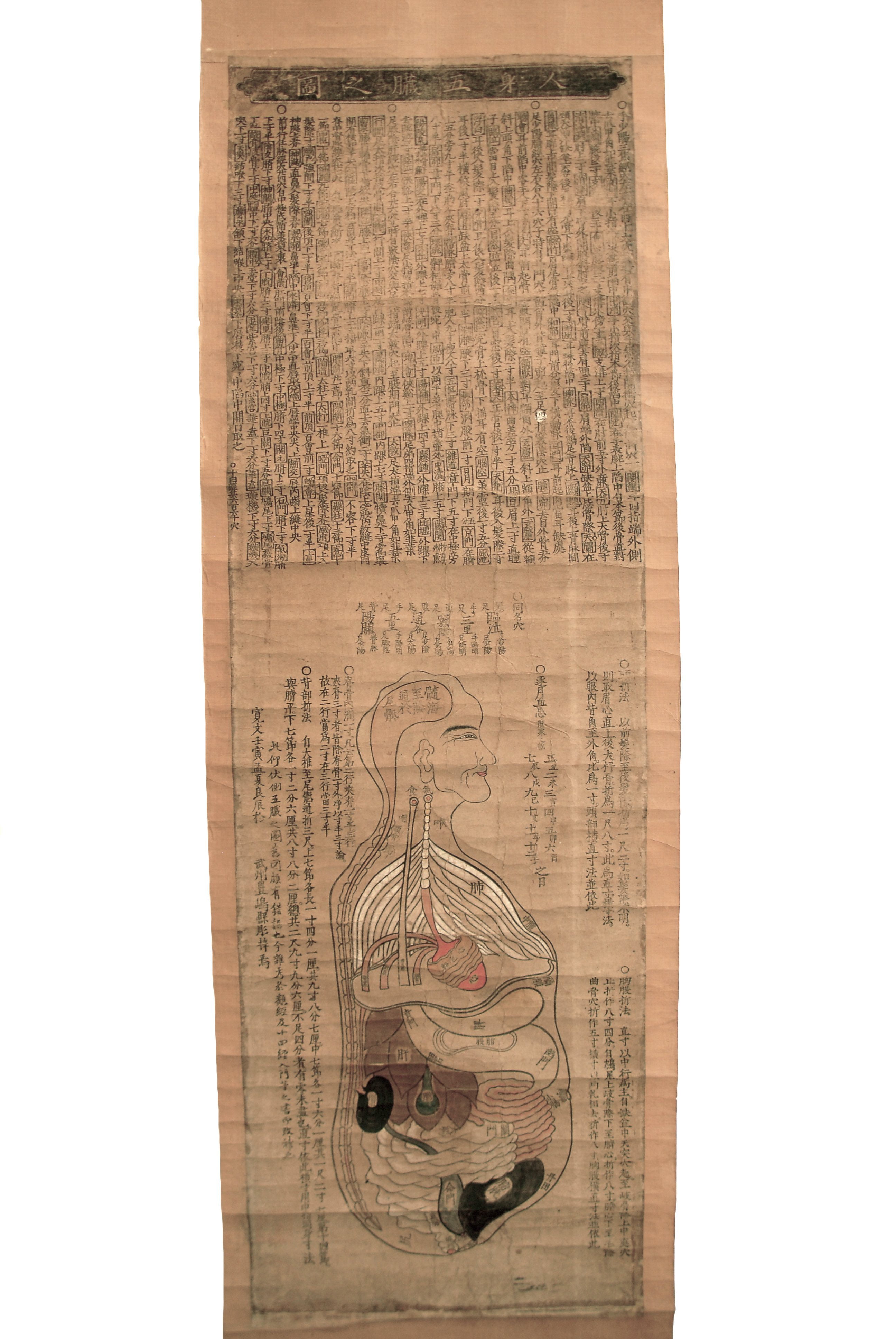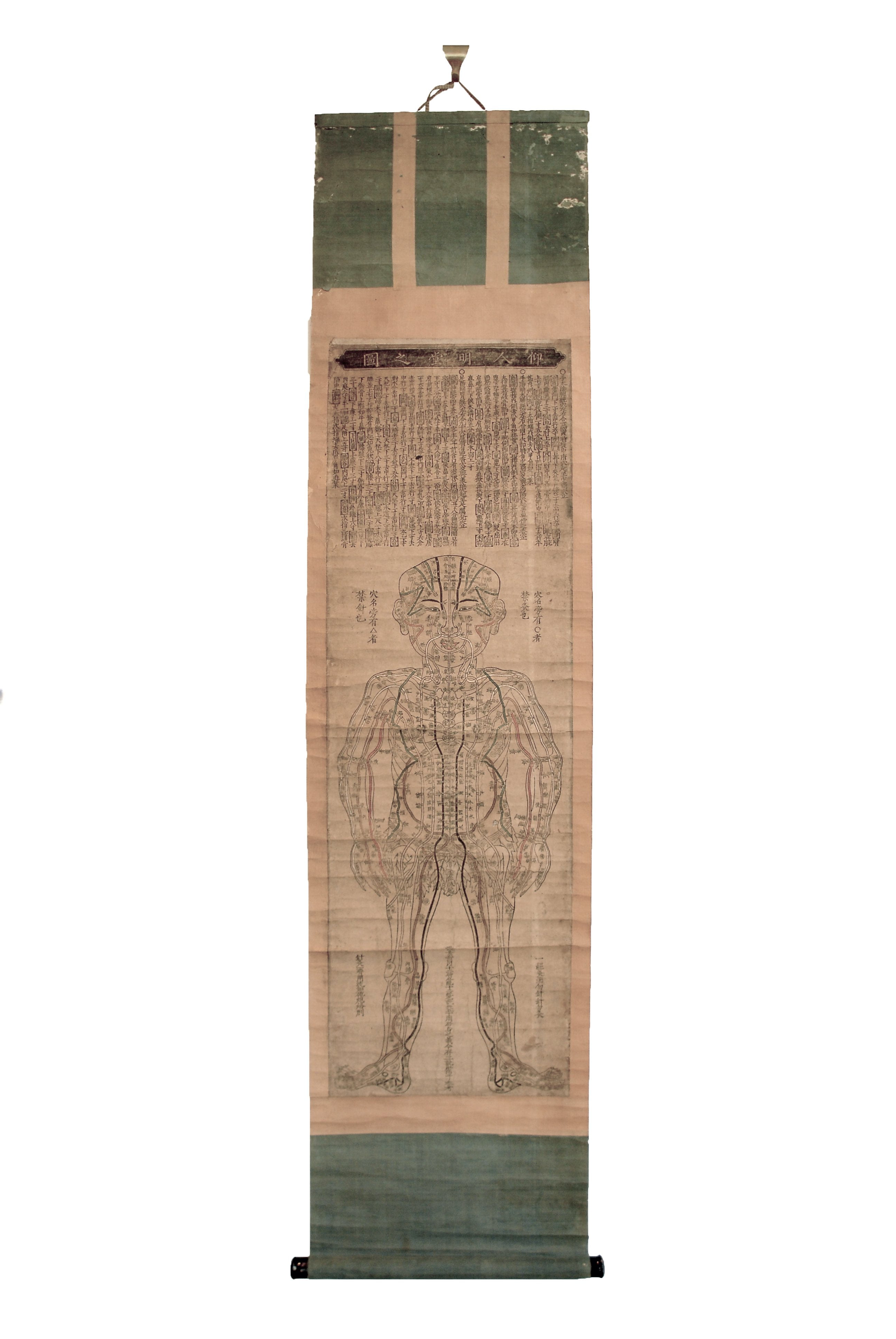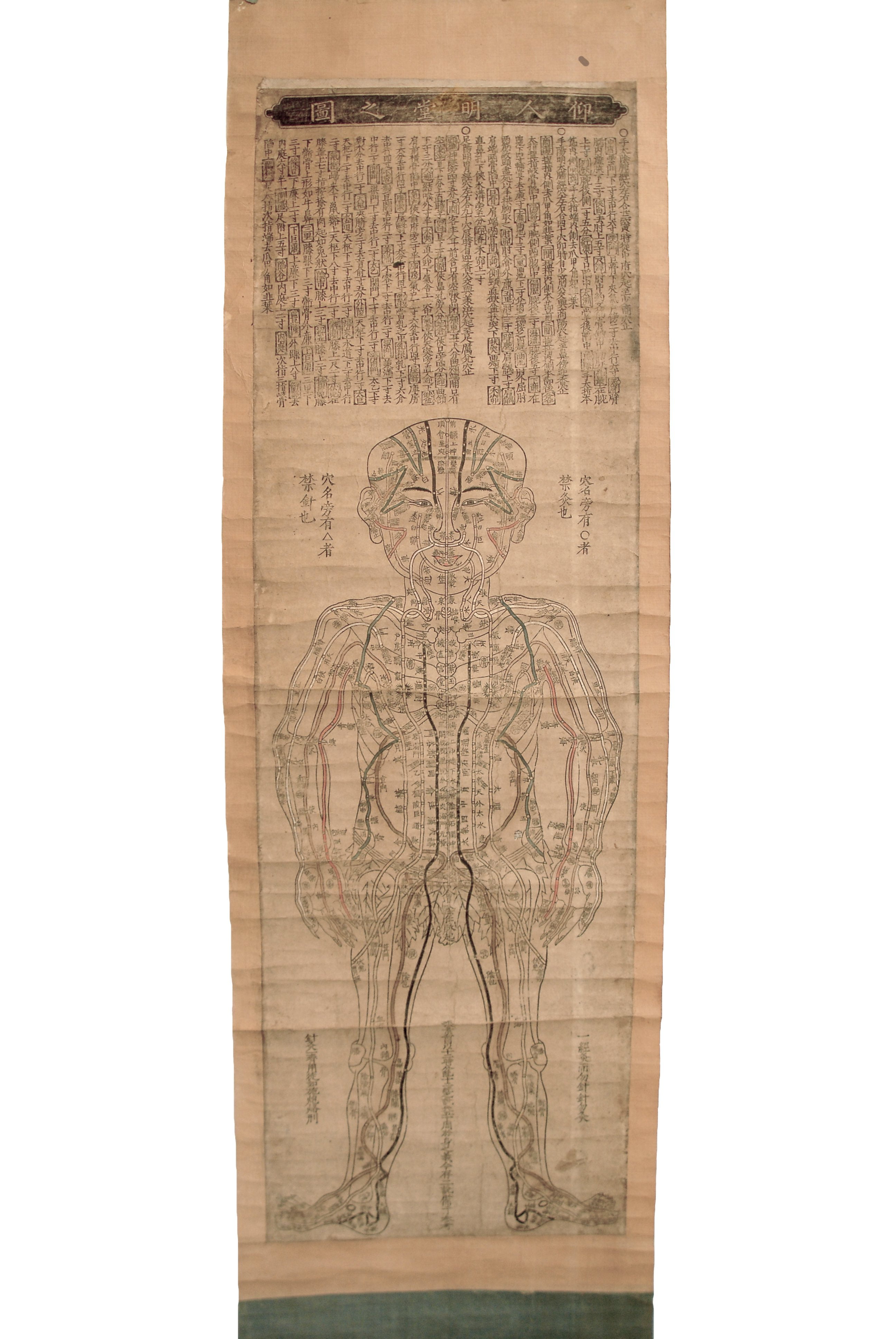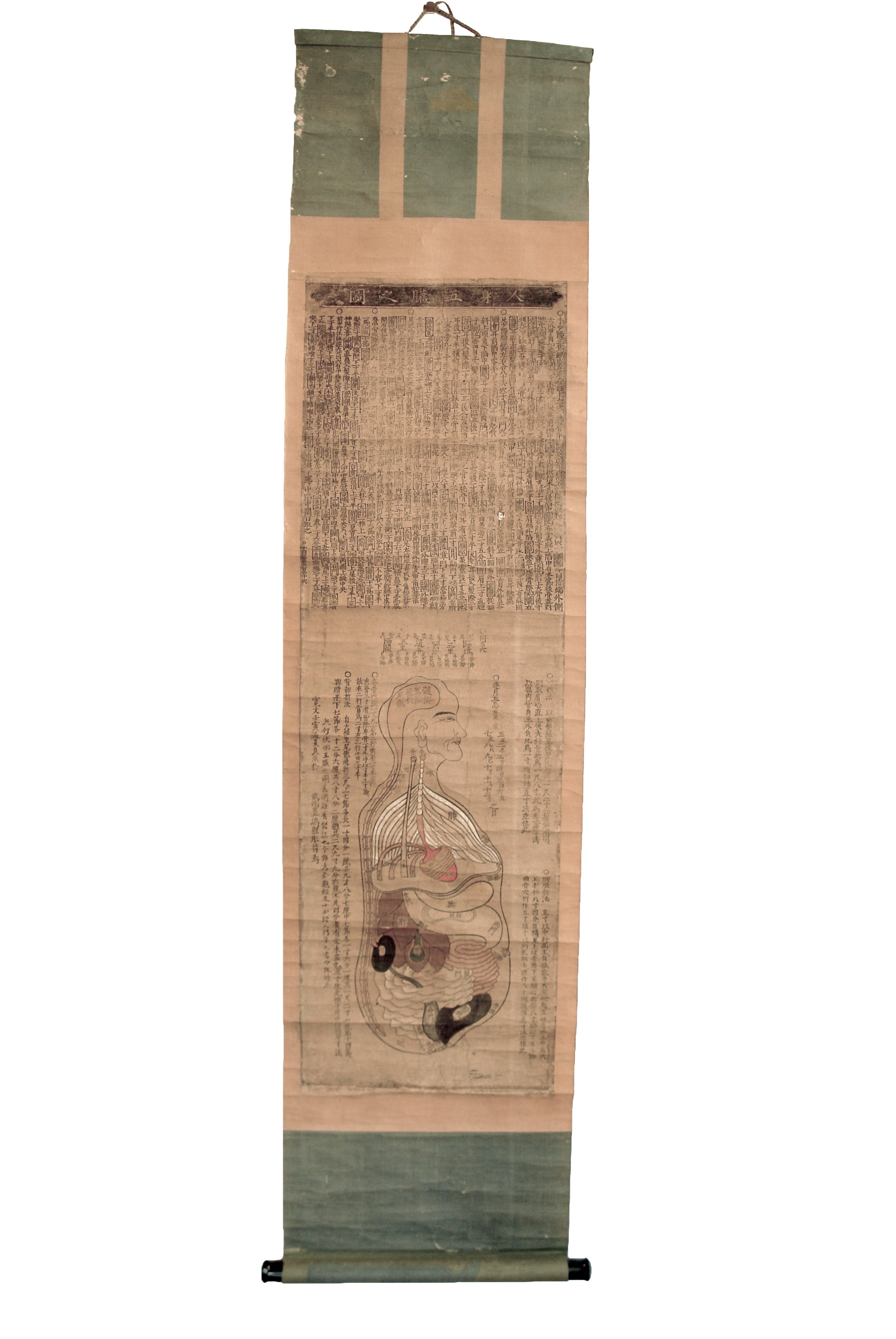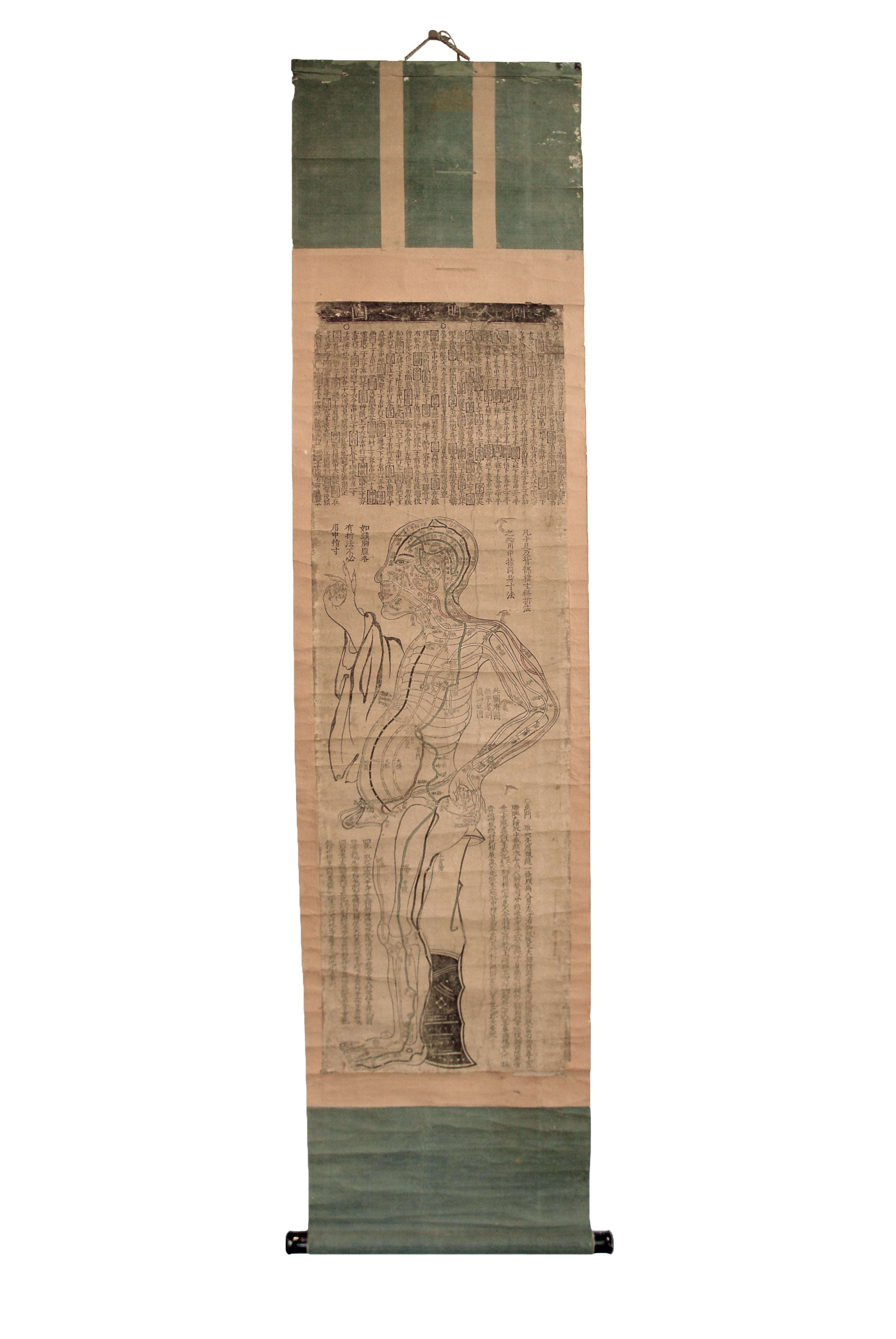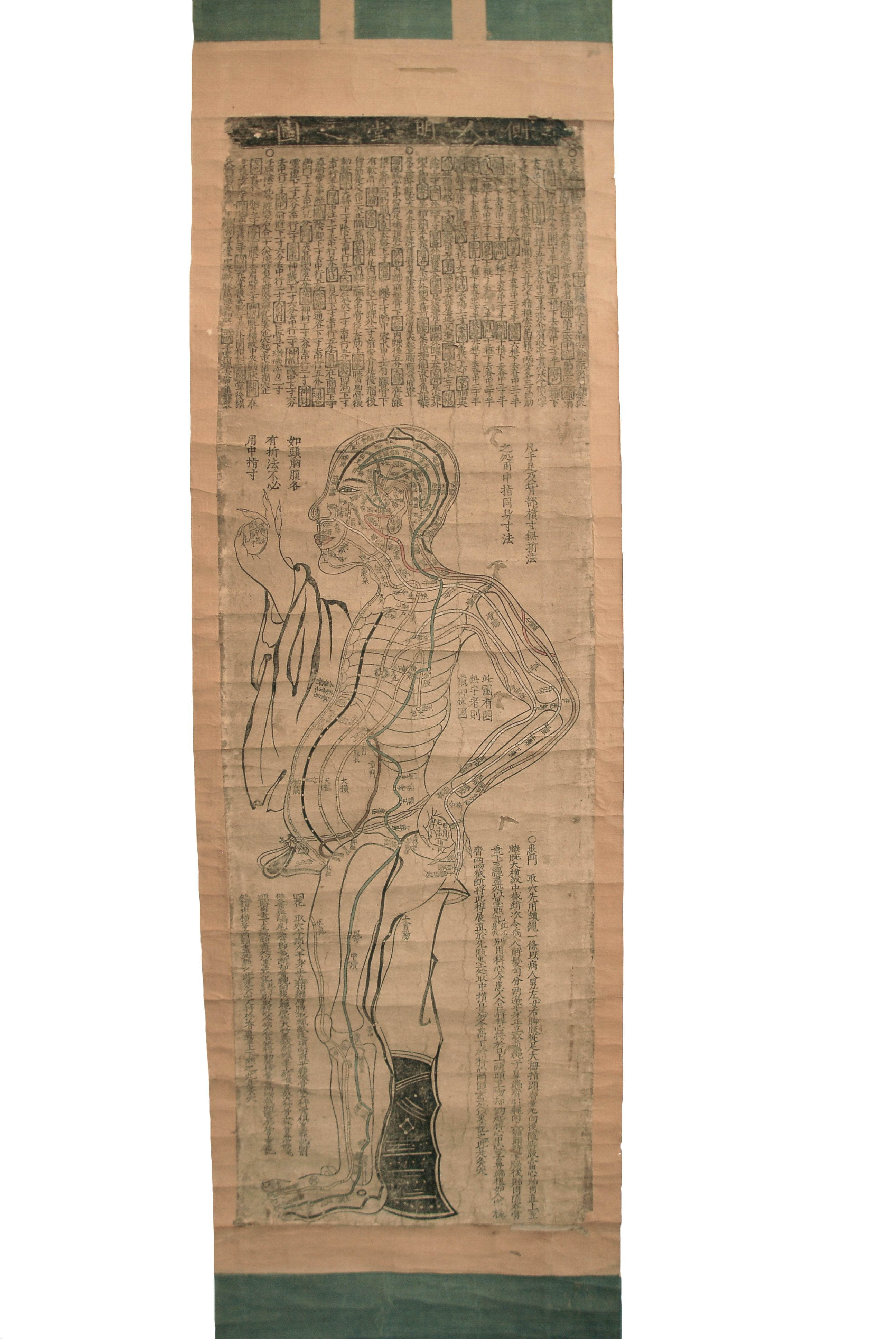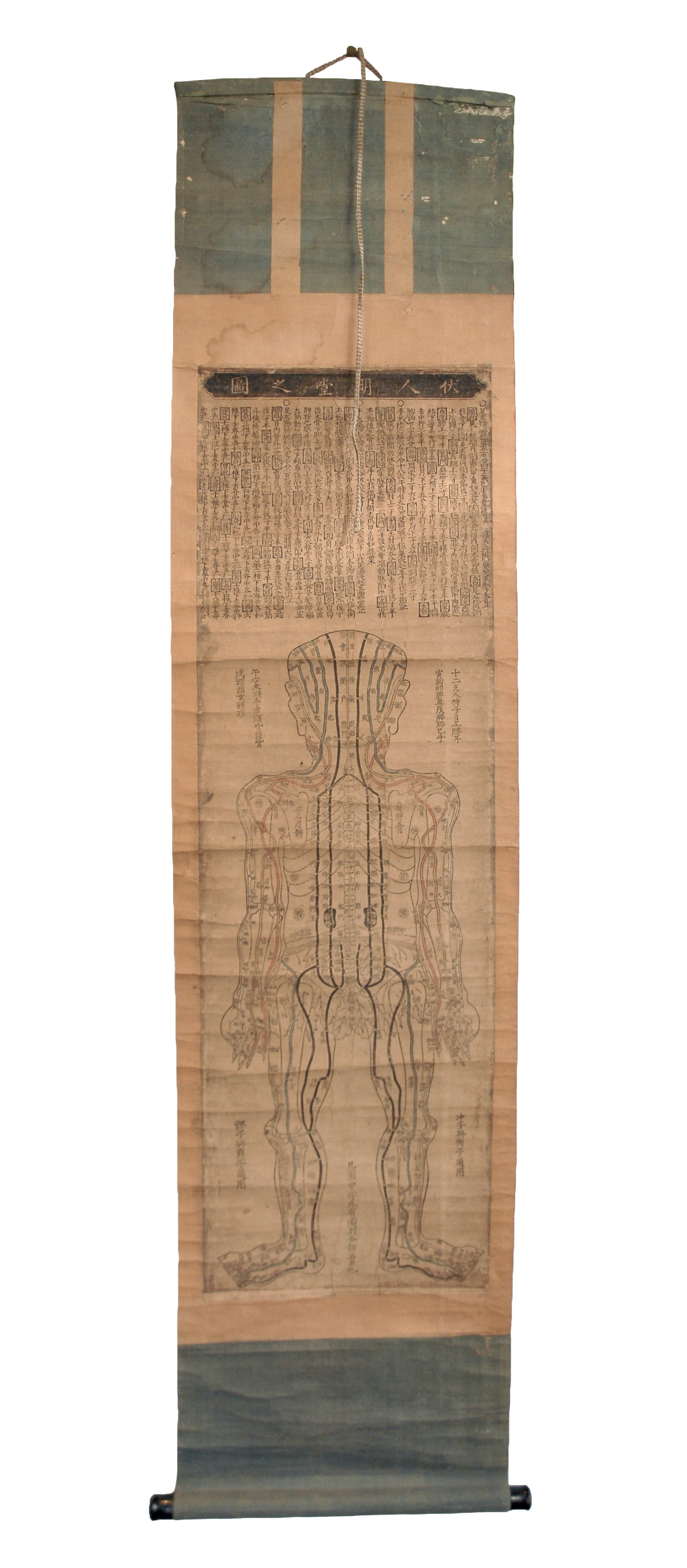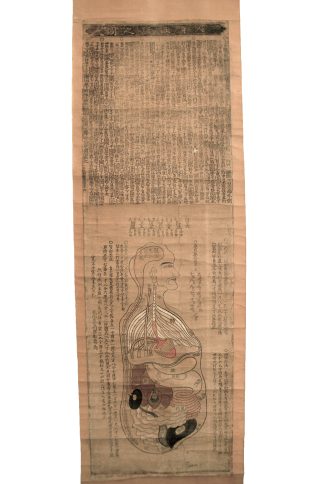MEIDŌ ZU (MEITANG TU)
JAPANESE ILLUSTRATED MEDICAL SCROLLS
A set of four acupuncture and moxibustion charts
Japan, Bushu Toshima, dated Kanbun 2 (1662), Edo Period£27,500.00
Four large woodblock printed acupuncture and moxibustion charts known as a Meid zu, printed on paper in sumi ink with hand-painted details in colour, each entitled at the top: ‘Fukujin Meid -no zu’ (Front view of the Illuminated hall), ‘Sokujin Meido no zu’ (Side view of the Illuminated hall), Gyojin Meid no zu’ (Rear view of the Illuminated hall) and ‘Jinshin goz no zu’, (the picture of five human organs). Text in Min-cho kanji (Chinese Ming Dynasty script) and depicting figures with locations of acupuncture points (keiketsu) and ‘qi’ channels running through the human body. The last scroll showing a half-length figure with a diagram of internal organs (goz ) bears the date, Kanbun Mizunoe tora (Kanbun, year of the tiger), in early summer, at Bushu (Musashi Provence) Toshima.
Each print, approximately 860 x 270 mm, is backed on pale brown and blue paper and mounted as a hanging scroll with lacquer scroll-ends, each scroll approximately 1340 x 320 mm, with a fitted wooden box.
The title of the prints: Meidō(Illuminated hall) is derived from the name of the building in which the ancient Chinese Emperors conducted rituals and ceremonies related to cosmology. Here, the human body is the Meid , and a microcosm of the external world, the model and the image of the universe are depicted within it.
In the illustration of three views of the figure, there are twelve main ‘qi’ energy channels (meridians) handcoloured in red, yellow, white, black, and blue, representing Fire, Earth, Metal, Water and Wood, based on the traditional Chinese philosophy of ‘Wu Xing’ (Five elements /phases of the universe). The meridians and five phases combine and interact in a profound and complex manner. The invisible meridians run through the body, each corresponding to a particular organ, forming an intricate network of three hundred and forty-nine acu-moxa points, suggestive of constellations in the night sky.
The scrolls indicate the location of the acupuncture points and how deep the needle should go, as well as where to and not to apply moxibustion herbs to release or withhold energy. The classical Chinese text would not have been comprehensible to ordinary Japanese so these were designed for scholars. There was no public medical college in Japan at that time and many practising physicians also doubled as teachers, running small private medical schools alongside their practices. Hanging scrolls would have been eminently suited for both purposes.
It was believed that acupuncture and moxibustion were introduced to Japan in the 5th century by the Korean immigrants. However, it was not incorporated into mainstream teaching until the 17th century when a large number of medical/philosophy books were imported from China, and many highly skilled Chinese physicians sought sanctuary in Japan following the fall of the Ming dynasty.
During the Edo period (1603 – 1868), Chinese philosophy and literature also flourished in Japan, and neo-Confucianism (Shushigaku) became the official doctrine for the ruling samurai government. From the evidence of these charts, Chinese medicines and Confucianism were likely taught side by side as they share the same roots – the belief that the function of the ‘qi’ energy in the human body should be maintained in harmony and balance with the external world.
Many Confucian scholars in the Edo period became medical doctors, adapting their knowledge and skills to the profession as they were able to study medical text books written in Chinese. As the urban population grew, so did the demand for physicians, and Chinese medicine was now taught at private schools or homes. The charts such as these could well have been hung on the wall of the schools or at the doctors’ practices.
The Meido chart was modeled on a life-size bronze man with all the meridians and acu-moxa points drawn on the figure created in the Song dynasty (960 – 1279) in China, and therefore the charts are also called Meid d jin zu (Illuminated hall, bronze figures). Large printed figures such as these were used since the Ming dynasty (1368 – 1644).
The scrolls are the Japanese version of the Ming dynasty ‘Mingtang tu’ with additional information, and are one of the earliest examples of Japanese single-sheet woodblock prints showing sophisticated printing skills, with meticulous details and vigorous lines, which subsequently evolved into early ukiyo-e (picture of floating world) prints in the late 17th century.
From the collection of Jean Blondelet, the greatest French collector of rare medical books of the 20th century.
M. Mayanagi ‘Ryukoku daigaku wakan kichoseki kaidai’ (Introduction to the rear oriental books at the Ryukoku University, Kyoto 1997)K. Nakamura ‘Meridians map and model theory’ (Meiji University of Oriental Medicine, 1997)H. Yasui ‘History of Japanese acupuncture and Moxibustian’ (Japan institute of TCM research, 2010)In stock


